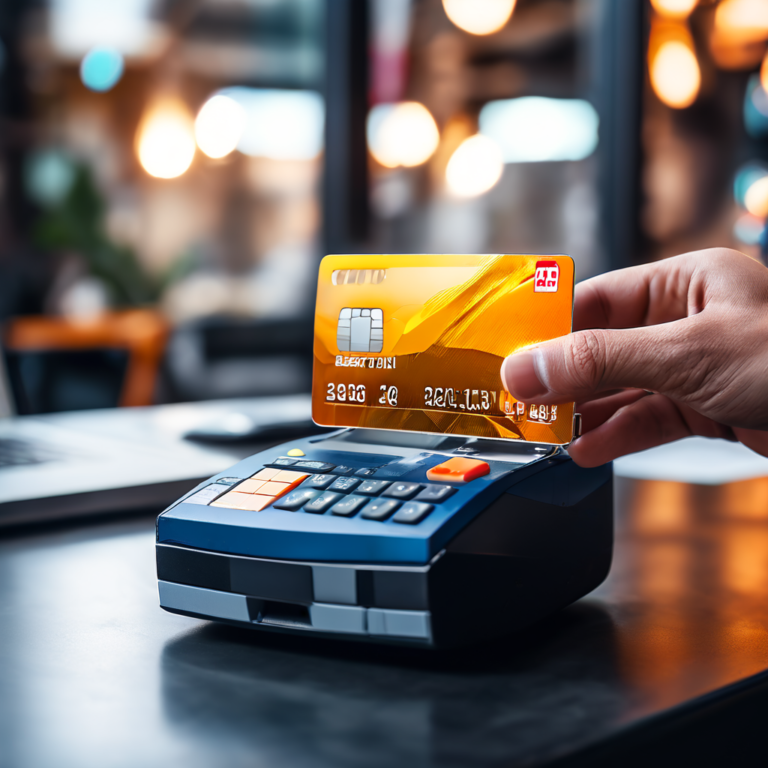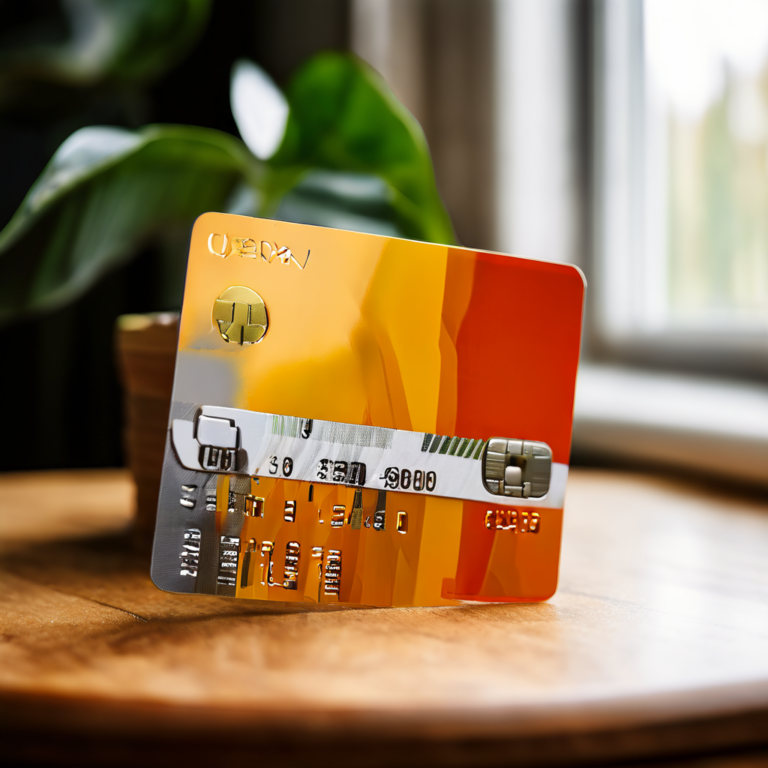Secured vs. Unsecured Credit Cards: Which One Is Right for You?
Introduction
Choosing the right credit card can have a major impact on your financial health. If you’re new to credit or trying to rebuild your credit score, you may be considering a secured or unsecured credit card. While both types of cards help you access credit, they work in different ways and serve different financial needs. In this guide, we’ll explore the key differences between secured and unsecured credit cards, their benefits and drawbacks, and how to decide which one is the best fit for you.
What is a Secured Credit Card?
A secured credit card is a type of credit card that requires a refundable security deposit as collateral. It functions like a traditional credit card, allowing users to make purchases, build credit, and develop responsible financial habits. However, unlike unsecured credit cards, secured cards are primarily designed for individuals with no credit history, poor credit, or those looking to rebuild their credit score.
How a Secured Credit Card Works
Secured credit cards operate similarly to regular credit cards, with a key difference—the security deposit. Here’s how the process works:
- Security Deposit Requirement – To open a secured credit card, you must provide a cash deposit, which typically acts as your credit limit. For example, a $500 deposit usually grants a $500 credit limit.
- Regular Usage – Just like a traditional credit card, you can use it for purchases, online transactions, and bill payments.
- Monthly Payments – You’re required to pay at least the minimum balance each month, but paying the full statement balance avoids interest charges.
- Credit Reporting – Most secured cards report to major credit bureaus (Experian, Equifax, and TransUnion), helping users establish or rebuild their credit score over time.
- Deposit Refund – After demonstrating responsible use (such as making on-time payments and keeping balances low), some issuers may upgrade you to an unsecured credit card or refund your deposit.
Requirement of a Security Deposit
The security deposit is a major requirement for a secured credit card, as it reduces the lender’s risk. Here’s what to know about the deposit:
- Deposit Amount Varies – Minimum deposits typically start at $200 to $300, but some issuers allow higher limits.
- Credit Limit Tied to Deposit – Most secured cards set the credit limit equal to the deposit (e.g., a $1,000 deposit = $1,000 credit limit). Some premium secured cards offer higher limits based on creditworthiness.
- Fully Refundable – If you close the account in good standing or transition to an unsecured card, you’ll get your deposit back.
- No Deposit = No Card – Unlike traditional credit cards, you must provide a deposit before activation.
How Secured Cards Help Build or Rebuild Credit
Secured credit cards are one of the best tools for improving your credit score, especially if you have no credit or a poor credit history. Here’s how they help:
- Credit Bureau Reporting – Since most secured cards report to the major credit bureaus, making on-time payments helps improve your credit score.
- Credit Utilization Improvement – By keeping balances below 30% of the credit limit, you can positively impact your credit utilization ratio.
- Payment History Establishment – Payment history makes up 35% of your credit score, and secured cards allow you to build a track record of timely payments.
- Gateway to Unsecured Cards – After 6–12 months of responsible use, many issuers allow cardholders to upgrade to an unsecured card with a higher credit limit and no deposit requirement.
Pros and Cons of Secured Credit Cards
While secured credit cards offer a path to financial stability, they come with both benefits and drawbacks.
✅ Pros
✔ Easy Approval – Ideal for individuals with poor or no credit history since approval is based on the deposit rather than creditworthiness.
✔ Credit Score Improvement – Helps build or rebuild credit by reporting to major credit bureaus.
✔ Deposit is Refundable – Unlike prepaid debit cards, your deposit is returned once you upgrade or close the account responsibly.
✔ Spending Control – Since the credit limit is based on your deposit, it helps users avoid overspending and develop good credit habits.
❌ Cons
✖ Requires an Upfront Deposit – Unlike unsecured cards, you must pay a security deposit, which may be a barrier for some users.
✖ Lower Credit Limits – Credit limits are usually tied to the deposit amount, which can restrict spending power.
✖ Potential Fees – Some secured cards charge annual fees, application fees, or high interest rates, so it’s important to compare options.
✖ Not a Long-Term Solution – Secured cards are meant to be a temporary tool; the goal is to transition to an unsecured credit card over time.
What is an Unsecured Credit Card?
An unsecured credit card is a traditional type of credit card that does not require a security deposit to open. Instead, approval is based on the applicant’s creditworthiness, which includes factors like credit score, income, and debt-to-income ratio. These cards are the most common form of credit cards and come with varied benefits, rewards programs, and interest rates.
Unlike secured credit cards, which require a refundable security deposit, unsecured credit cards allow cardholders to borrow up to a pre-approved credit limit without any upfront collateral. However, since they pose more risk to lenders, applicants need to meet specific credit requirements to qualify.
How It Differs from a Secured Card
The primary distinction between secured and unsecured credit cards is the requirement of a security deposit. Below is a comparison of their key differences:
| Feature | Unsecured Credit Card | Secured Credit Card |
|---|---|---|
| Deposit Required? | ❌ No | ✅ Yes |
| Approval Based On? | Credit score, income, financial history | Security deposit + creditworthiness |
| Credit Limit | Based on financial profile | Typically equal to deposit |
| Best For | Those with fair to excellent credit | Those with limited or poor credit |
| Can Upgrade? | Not necessary | Often transitions to an unsecured card |
| Risk to Lender | Higher risk | Lower risk (collateralized by deposit) |
In short, unsecured credit cards provide greater financial flexibility, but they also require a stronger credit profile to qualify.
No Deposit Required but Based on Creditworthiness
One of the biggest advantages of an unsecured credit card is that it does not require a security deposit. Instead, lenders assess an applicant’s financial background to determine:
- Credit Score – Higher scores (typically 670+) increase approval odds for better cards with lower interest rates.
- Income Stability – Card issuers may require proof of income to ensure the ability to repay debts.
- Debt-to-Income Ratio (DTI) – A lower DTI increases approval chances.
- Credit History – A longer and well-managed credit history shows reliability in handling credit accounts.
Since approval depends on creditworthiness, those with poor or no credit history may struggle to qualify for unsecured cards with favorable terms. In such cases, a secured credit card or a credit-building loan may be a better starting point.
Types of Unsecured Credit Cards
Unsecured credit cards come in many varieties, catering to different financial needs. Some common types include:
1. Cashback Credit Cards
- Offer cash rewards on purchases (e.g., 1.5% to 5% cashback).
- Examples: Flat-rate cashback cards, tiered cashback (e.g., 3% on groceries, 2% on gas), and rotating category cashback cards.
- Best for: Those who want simple savings on everyday expenses.
2. Travel Rewards Credit Cards
- Earn points or miles redeemable for flights, hotels, and travel perks.
- Many offer free checked bags, airport lounge access, and travel insurance.
- Best for: Frequent travelers looking to maximize travel-related spending.
3. Low-Interest or 0% APR Credit Cards
- Feature low ongoing interest rates or introductory 0% APR offers on purchases and balance transfers.
- Can help users pay off large purchases or consolidate debt with lower interest.
- Best for: Those who need temporary financing without high-interest charges.
4. Student Credit Cards
- Designed for college students with little or no credit history.
- Often have lower credit limits and basic rewards programs.
- Best for: Young adults looking to build credit responsibly.
5. Business Credit Cards
- Tailored for small business owners, offering perks like expense tracking, business rewards, and higher credit limits.
- Some cards provide bonus rewards for business-related spending categories like office supplies and travel.
- Best for: Entrepreneurs and business owners managing company expenses.
Pros and Cons of Unsecured Credit Cards
Unsecured credit cards offer many benefits but also come with certain risks. Below are the key advantages and disadvantages.
✅ Pros
✔ No Security Deposit Required – Unlike secured cards, you don’t need to put down a deposit to open an account.
✔ Higher Credit Limits – Unsecured cards often offer higher credit limits, which can improve your credit utilization ratio.
✔ Better Rewards and Perks – Many unsecured cards come with cashback, travel points, and purchase protections.
✔ Lower Interest Rates for Good Credit Holders – If you have excellent credit, you may qualify for a card with a low APR.
✔ More Upgrade Potential – Many unsecured cards offer credit limit increases or additional benefits over time.
❌ Cons
✖ Harder to Qualify – Applicants with bad credit or no credit history may not qualify for unsecured cards with good terms.
✖ Higher Interest Rates – If you carry a balance, APR can be high, especially on rewards cards.
✖ Annual Fees on Some Cards – Premium rewards cards may charge annual fees ($95 to $500+ per year).
✖ Late Fees and Penalties – Missed payments can lead to penalty APRs and damage to your credit score.

Key Differences Between Secured and Unsecured Credit Cards
When choosing between a secured and unsecured credit card, it’s essential to understand the differences in approval requirements, credit-building potential, fees, interest rates, and spending limits. Both types of cards serve different purposes, and selecting the right one depends on your financial situation and credit history.
Approval Requirements: Credit Score, Income, and More
One of the biggest differences between secured and unsecured credit cards is how you qualify for each.
Secured Credit Card Approval
✅ Requires a refundable security deposit (usually $200–$500), which acts as collateral.
✅ Available to those with bad credit (below 580) or no credit history.
✅ Income requirements are typically lower than unsecured cards.
✅ Fewer credit score restrictions—easier to qualify.
Unsecured Credit Card Approval
✅ Approval is based on creditworthiness, including credit score, income, and financial history.
✅ Requires a fair to excellent credit score (typically above 600 for basic cards, above 700 for premium cards).
✅ Higher income requirements compared to secured cards.
✅ No security deposit is needed, but approval can be harder for those with bad credit.
Key Takeaway: If you have low or no credit, a secured card is easier to get. If you have a good credit history, an unsecured card offers more benefits without requiring a deposit.
Credit-Building Potential: Which One Helps Improve Credit Faster?
Both secured and unsecured credit cards can help build credit, but they work differently.
Secured Credit Cards for Credit Building
✔ Great for those establishing or rebuilding credit.
✔ Reports to all three major credit bureaus (Experian, Equifax, TransUnion).
✔ Acts as a stepping stone to an unsecured card if used responsibly.
✔ Can help improve credit score faster because responsible use is more noticeable on a limited credit profile.
Unsecured Credit Cards for Credit Building
✔ Helps maintain or improve existing credit scores.
✔ Available with higher credit limits, which can improve your credit utilization ratio.
✔ More card options with credit-building rewards and perks.
✔ If misused (late payments, high balances), it can hurt your credit faster than a secured card.
Key Takeaway: A secured credit card is best for quickly building or repairing credit, while an unsecured card is ideal for maintaining good credit once established.
Fees and Interest Rates: Cost Differences
Secured and unsecured credit cards differ in cost, including annual fees, interest rates, and potential penalties.
Secured Credit Card Costs
✔ Lower or no annual fees, but some issuers may charge them.
✔ Lower interest rates (APR) than high-risk unsecured cards.
✔ Refundable security deposit acts as a credit limit but is not an actual cost unless misused.
✔ Some secured cards convert into unsecured cards after responsible use, refunding the deposit.
Unsecured Credit Card Costs
✔ Some offer 0% APR introductory rates, but long-term interest rates can be high (15–30% APR).
✔ Annual fees vary (basic cards may be free, premium cards can charge $95–$500 per year).
✔ Some unsecured cards charge foreign transaction fees and cash advance fees.
✔ If you carry a balance, interest charges can quickly add up, making it more expensive than a secured card.
Key Takeaway: Secured cards are cheaper upfront due to refundable deposits, but unsecured cards may have higher ongoing fees and interest rates, especially for those with lower credit scores.
Spending Limits and Rewards Programs
Your spending power and rewards potential differ based on whether you choose a secured or unsecured credit card.
Spending Limits on Secured Credit Cards
✔ Your credit limit equals your security deposit (e.g., a $300 deposit means a $300 limit).
✔ Some issuers allow credit limit increases without additional deposits after on-time payments.
✔ Limits are lower than unsecured cards, restricting large purchases.
Spending Limits on Unsecured Credit Cards
✔ Higher credit limits, often $1,000 to $10,000+ depending on creditworthiness.
✔ Some cards offer automatic credit limit increases with responsible use.
✔ Greater spending power, but high utilization can impact credit score.
Rewards Programs: How They Compare
Secured Credit Cards
✅ Limited or no rewards on most secured cards.
✅ Some newer secured cards offer cashback or points.
✅ Focused on credit-building, not perks.
Unsecured Credit Cards
✅ Offer cashback, travel points, airline miles, or statement credits.
✅ Special perks like airport lounge access, purchase protection, and extended warranties.
✅ Can maximize spending with bonus categories (e.g., 5% on groceries, 3% on dining, 1% on everything else).
Key Takeaway: Unsecured credit cards provide higher spending power and better rewards, while secured cards are mainly for building credit, not earning perks.
Final Comparison: Secured vs. Unsecured Credit Cards
| Feature | Secured Credit Card | Unsecured Credit Card |
|---|---|---|
| Approval Requirements | Easier to get, requires security deposit | Based on credit score & income |
| Best For | Credit-building, bad/no credit | Established credit users |
| Credit Limit | Equal to deposit ($200–$3,000) | Higher limits ($1,000–$10,000+) |
| Rewards & Perks | Minimal or none | Cashback, travel points, and perks |
| Fees & Interest | Lower APR, possible annual fees | Higher APR, possible annual fees |
| Risk to Lender | Lower (secured by deposit) | Higher (no collateral) |
| Risk to Cardholder | Lower—can’t spend beyond deposit | Higher—overspending can lead to debt |
Who Should Choose a Secured Credit Card?
A secured credit card is an excellent financial tool for those who need to build or rebuild credit. Unlike unsecured credit cards, which require good credit for approval, secured cards are more accessible because they require a refundable security deposit as collateral. If you’re wondering whether a secured card is the right choice for you, consider the following situations where it makes the most sense.
People with Bad or No Credit History
If you have little to no credit history or a low credit score, getting approved for a traditional credit card can be difficult. Secured credit cards are designed specifically for:
✔ Young adults or students who are new to credit.
✔ Individuals who have never used credit before and need to establish a record.
✔ People who have low or poor credit scores (below 580) and struggle to qualify for unsecured cards.
✔ Those who have been denied traditional credit cards due to insufficient credit history.
Since secured credit cards report to all three major credit bureaus (Experian, Equifax, TransUnion), responsible use can help you establish and improve your credit profile over time.
Those Looking to Rebuild Credit After Financial Struggles
Life events like job loss, medical emergencies, or unexpected expenses can lead to missed payments, high debt, or even bankruptcy. If you’ve faced financial setbacks, a secured credit card can be a great way to:
✔ Rebuild your credit score after late payments, charge-offs, or collections.
✔ Recover from a bankruptcy filing (most secured cards accept applicants post-bankruptcy).
✔ Show lenders that you’re responsible by making on-time payments and keeping your balance low.
Secured credit cards provide a second chance to prove creditworthiness and work toward qualifying for an unsecured credit card in the future.
Individuals Who Need to Establish Responsible Credit Habits
Good credit habits take time to develop, and a secured credit card can help you practice smart financial behavior while minimizing risk. A secured card is ideal for:
✔ People who want to improve their credit utilization by keeping balances low.
✔ Individuals looking to learn how to manage credit responsibly before upgrading to an unsecured card.
✔ Those who need to demonstrate responsible borrowing to qualify for better credit products later.
By using a secured credit card wisely—paying off the balance in full each month and staying below 30% of your credit limit—you can gradually improve your credit score and qualify for better credit options in the future.
FAQs
Q: What is a secured credit card?
A: A secured credit card requires a cash deposit as collateral, which acts as your credit limit. It’s typically used to build or rebuild credit.
Q: What is an unsecured credit card?
A: An unsecured credit card doesn’t require a deposit and is given based on your creditworthiness. Most standard credit cards fall into this category.
Q: Who should get a secured credit card?
A: Secured cards are ideal for people with no credit history or poor credit who need to establish or improve their credit score.
Q: What are the benefits of an unsecured credit card?
A: Unsecured cards offer higher credit limits, better rewards, and lower fees if you have good credit.
Q: Can I upgrade from a secured to an unsecured credit card?
A: Yes, many issuers allow you to transition to an unsecured card after demonstrating responsible use and improving your credit score.
Q: Which one is right for me?
A: If you have good credit, an unsecured card is the better choice. If you need to build credit, a secured card can help you qualify for better options in the future.
Conclusion
Secured and unsecured credit cards each serve different purposes, and the right choice depends on your financial situation and goals. If you’re building or repairing your credit, a secured card offers a solid foundation with a manageable path to an unsecured card. On the other hand, if you have a good credit history, an unsecured card can provide better rewards, perks, and flexibility. Regardless of which card you choose, responsible usage—such as making payments on time and keeping balances low—will help you build a stronger financial future.





